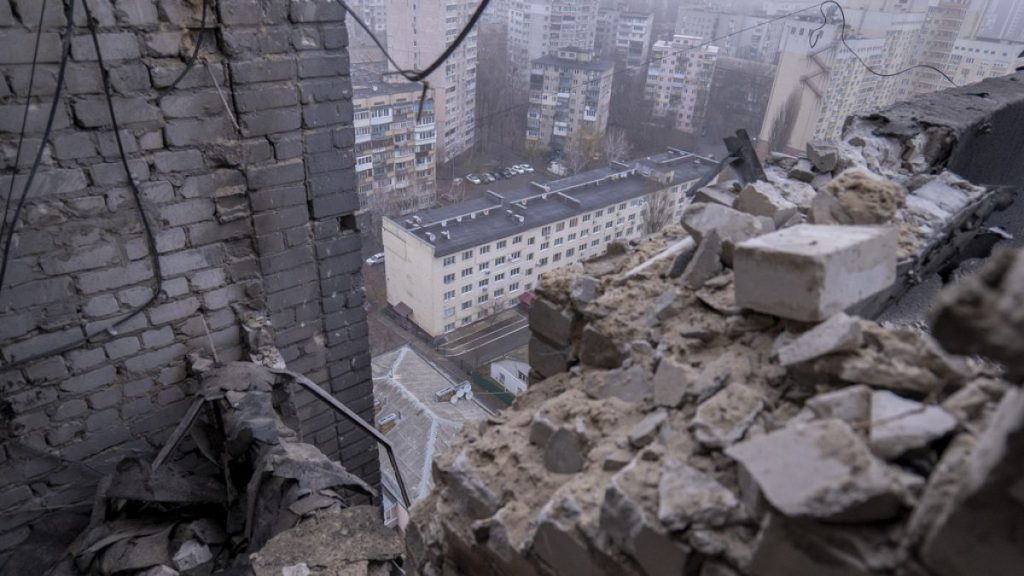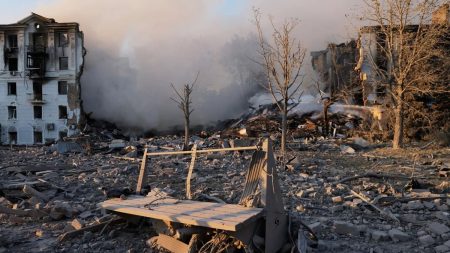The pre-dawn hours of Saturday witnessed an escalating exchange of drone attacks between Russia and Ukraine, marking another grim chapter in the ongoing conflict. In the southern Ukrainian city of Zaporizhzhia, two individuals sustained injuries as Russian drones targeted residential areas. The attacks inflicted widespread damage, impacting twenty houses, igniting three fires, and rupturing a low-pressure gas pipe. Debris from the downed drones also damaged a trade kiosk and private properties. Residents recounted the suddenness and intensity of the explosions, describing the fear and disorientation that gripped them in the aftermath. One resident narrated the harrowing experience of witnessing a neighbor, engaged in roof repairs, being struck by the drone’s impact.
Concurrent with the Zaporizhzhia attack, Ukraine’s military reported a massive drone incursion by Russian forces, involving 74 drones targeting a wide swathe of Ukrainian territory, encompassing Poltava, Sumy, Kharkiv, Cherkasy, Chernihiv, Kyiv, Dnipropetrovsk, Zaporizhzhia, Kirovohrad, Kherson, and Mykolaiv. Ukrainian air defenses managed to neutralize 47 of these drones, while the remaining 27 vanished from radar tracking, raising concerns about their potential impact.
Retaliatory action swiftly followed as a Ukrainian drone strike targeted Russia’s Tambov region. The attack resulted in injuries to at least seven individuals and caused substantial damage to two five-story apartment buildings in the town of Kotovsk. Windows were shattered, and balconies were damaged in the impact, leaving behind a scene of destruction captured in videos circulating on social media. The images depicted the aftermath of the attack, showcasing the damaged buildings and the debris strewn across the roads.
These reciprocal drone attacks underscore the escalating nature of the conflict, with both sides increasingly resorting to unmanned aerial vehicles to strike deep within each other’s territories. The attacks on civilian areas, such as the residential districts in Zaporizhzhia and the apartment buildings in Kotovsk, highlight the indiscriminate nature of these strikes and the growing threat to civilian populations. The use of drones allows both sides to project power and inflict damage without deploying ground forces, thus minimizing direct military casualties but increasing the risk to non-combatants.
The ongoing conflict, which began with Russia’s full-scale invasion of Ukraine in February 2022, has spiraled into the largest armed conflict in Europe since World War II. The human toll has been devastating, with tens of thousands of lives lost on both sides. The relentless exchange of fire, the destruction of infrastructure, and the displacement of millions have created a humanitarian crisis of immense proportions. The repeated targeting of civilian areas raises grave concerns about potential war crimes and underscores the urgent need for a peaceful resolution.
The drone attacks represent a significant tactical shift in the conflict, allowing both sides to bypass traditional frontlines and strike targets deep within enemy territory. This development raises serious questions about the future trajectory of the war and the potential for further escalation. The increasing reliance on drone warfare also highlights the need for international regulations and safeguards to prevent the misuse of this technology and minimize civilian casualties. The ongoing conflict in Ukraine serves as a stark reminder of the devastating consequences of war and the urgent need for diplomatic solutions to prevent further suffering and loss of life.














